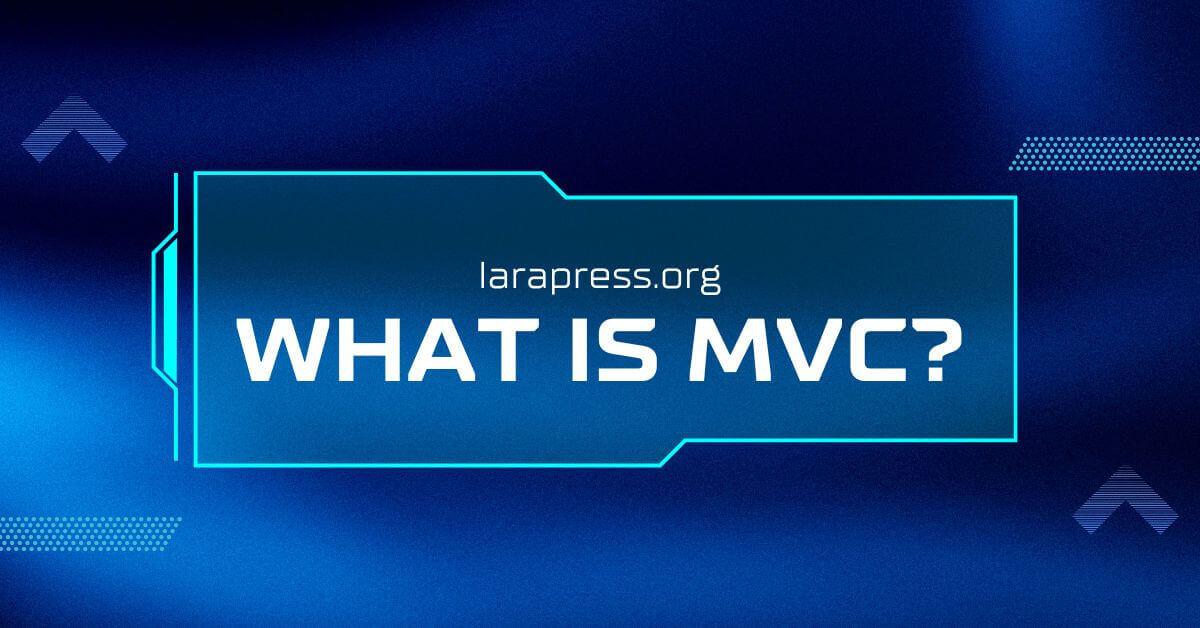
In the world of modern web development, MVC (Model-View-Controller) is one of the most important architectural patterns. It provides a clean, organized way to separate concerns in an application, making code easier to maintain, test, and scale.
At LaraPress.org, our CMS is built on Laravel, one of the most popular PHP frameworks that follows the MVC pattern at its core. But what exactly is MVC, and how does LaraPress implement it to offer a better experience for developers and content managers alike? Let’s explore.
MVC stands for Model-View-Controller, and it's a design pattern used to separate an application into three main components:
The Model handles all data-related logic. It interacts with the database, fetches or updates records, and ensures business rules are followed. In a CMS like LaraPress, Models represent data types like posts, pages, users, and settings.
The View is responsible for what users see on the screen. It’s the HTML or frontend template that displays your blog posts, forms, or dashboard content. Views use the data provided by the Controller to render dynamic content.
The Controller acts as the middleman between the Model and the View. It receives user input, processes it (often by calling a Model), and then returns a View with the appropriate data.
By separating these concerns, MVC allows teams to work more efficiently, reduces the chances of bugs, and makes your application much easier to update or scale.
LaraPress CMS is built entirely on Laravel’s MVC structure, providing a robust foundation while adding CMS-specific capabilities. Here's how we apply MVC principles in real-world use:
In LaraPress, every core component like Posts, Pages, Users, and Plugins has a dedicated Model. These Models use Laravel’s powerful Eloquent ORM to interact with the database seamlessly.
For example:
This line uses the Post Model to retrieve a post from the database by its slug. It’s clean, readable, and efficient.
The front-facing parts of LaraPress, such as blog layouts and admin dashboards, are crafted using Laravel’s Blade templating engine. Blade makes it easy to combine HTML with dynamic content:
LaraPress includes pre-built templates for faster setup but also allows developers to override and customize views as needed.
When a user visits a blog page, a Controller like PostController fetches the relevant data and passes it to the View:
This makes the application logic easy to understand and modular.
Here’s why MVC is crucial for modern CMS platforms like LaraPress:
Code Separation: Clean separation between data (Models), presentation (Views), and logic (Controllers).
Easy Testing: Each component can be tested independently.
Scalability: Add features without breaking the rest of the application.
Developer Collaboration: Backend and frontend teams can work in parallel.
LaraPress uses MVC to build clean URL structures, serve content faster, and offer better SEO control. With Models handling metadata and Views delivering clean HTML, your site is more likely to be indexed correctly by search engines—another reason why MVC helps make LaraPress a Google AdSense-friendly CMS.
The MVC architecture is the backbone of reliable and scalable web applications. At LaraPress.org, we’ve built our CMS on Laravel’s MVC foundation to give developers a modern, organized, and powerful platform for building everything from personal blogs to enterprise-level content systems.
Whether you're a developer or a content creator, understanding how MVC works—and how LaraPress uses it—can help you make better decisions when customizing or extending your website.
Ready to experience the power of MVC with LaraPress?
Visit https://LaraPress.org to get started today.